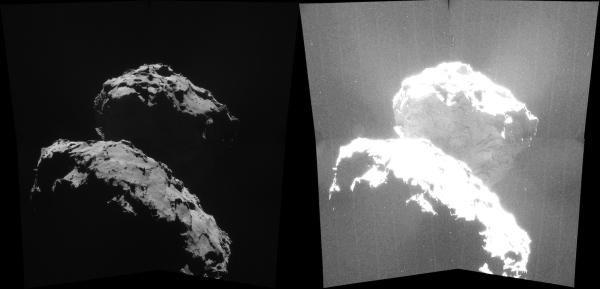Philae’s mission at Comet 67P/C-G
With the decision to pick a landing site for their Philae lander coming up this weekend, the Rosetta science team today released a press announcement describing in detail the lander’s mission.
The details are fascinating. Not only will Philae take images from the surface as well as get data of the surface and its surrounding environment, the probe will also literally pound the surface to measure its temperature as well as get seismic readings.
The MUPUS hammer is released and embeds itself into the ground so that it can measure the temperature at various depths in the subsurface. The acoustic signals of the vibrations of the hammer action will be detected by acoustic sensors in the feet of SESAME/CASSE and will be used to measure the mechanical properties of the nucleus.
If all goes well, they hope that Philae will remain operational on the surface through March.
With the decision to pick a landing site for their Philae lander coming up this weekend, the Rosetta science team today released a press announcement describing in detail the lander’s mission.
The details are fascinating. Not only will Philae take images from the surface as well as get data of the surface and its surrounding environment, the probe will also literally pound the surface to measure its temperature as well as get seismic readings.
The MUPUS hammer is released and embeds itself into the ground so that it can measure the temperature at various depths in the subsurface. The acoustic signals of the vibrations of the hammer action will be detected by acoustic sensors in the feet of SESAME/CASSE and will be used to measure the mechanical properties of the nucleus.
If all goes well, they hope that Philae will remain operational on the surface through March.




